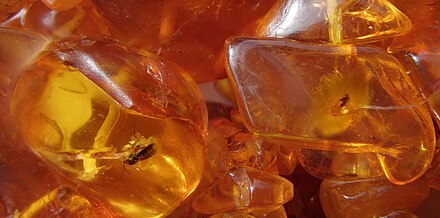History of geology
The history of geology is concerned with the development of the natural science of geology. Geology is the scientific study of the origin, history, and structure of Earth.[1]
Some of the first geological thoughts were about the origin of Earth. Ancient Greece developed some primary geological concepts concerning the origin of the earth. Additionally, in the 4th century BC Aristotle made critical observations of the slow rate of geological change. He observed the composition of the land and formulated a theory where the earth changes at a slow rate and that these changes cannot be observed during one person's lifetime. Aristotle developed one of the first evidence-based concepts connected to the geological realm regarding the rate at which the earth physically changes.[2][3]
However, it was his successor at the Lyceum, the philosopher Theophrastus, who made the greatest progress in antiquity in his work On Stones. He described many minerals and ores both from local mines such as those at Laurium near Athens, and further afield. He also quite naturally discussed types of marble and building materials like limestones, and attempted a primitive classification of the properties of minerals by their properties such as hardness.
Much later in the Roman period, Pliny the Elder produced a very extensive discussion of many more minerals and metals then widely used for practical ends. He was among the first to correctly identify the origin of amber as a fossilized resin from trees by the observation of insects trapped within some pieces. He also laid the basis of crystallography by recognising the octahedral habit of diamond.
Abu al-Rayhan al-Biruni (AD 973–1048) was one of the earliest Muslim geologists, whose works included the earliest writings on the geology of India, hypothesizing that the Indian subcontinent was once a sea.[4]
Ibn Sina (Avicenna, AD 981–1037), a Persian polymath, made significant contributions to geology and the natural sciences (which he called Attabieyat) along with other natural philosophers such as Ikhwan AI-Safa and many others. Ibn Sina wrote an encyclopedic work entitled "Kitab al-Shifa" (the Book of Cure, Healing or Remedy from ignorance), in which Part 2, Section 5, contains his commentary on Aristotle's Mineralogy and Meteorology, in six chapters: Formation of mountains, The advantages of mountains in the formation of clouds; Sources of water; Origin of earthquakes; Formation of minerals; The diversity of the earth's terrain.

